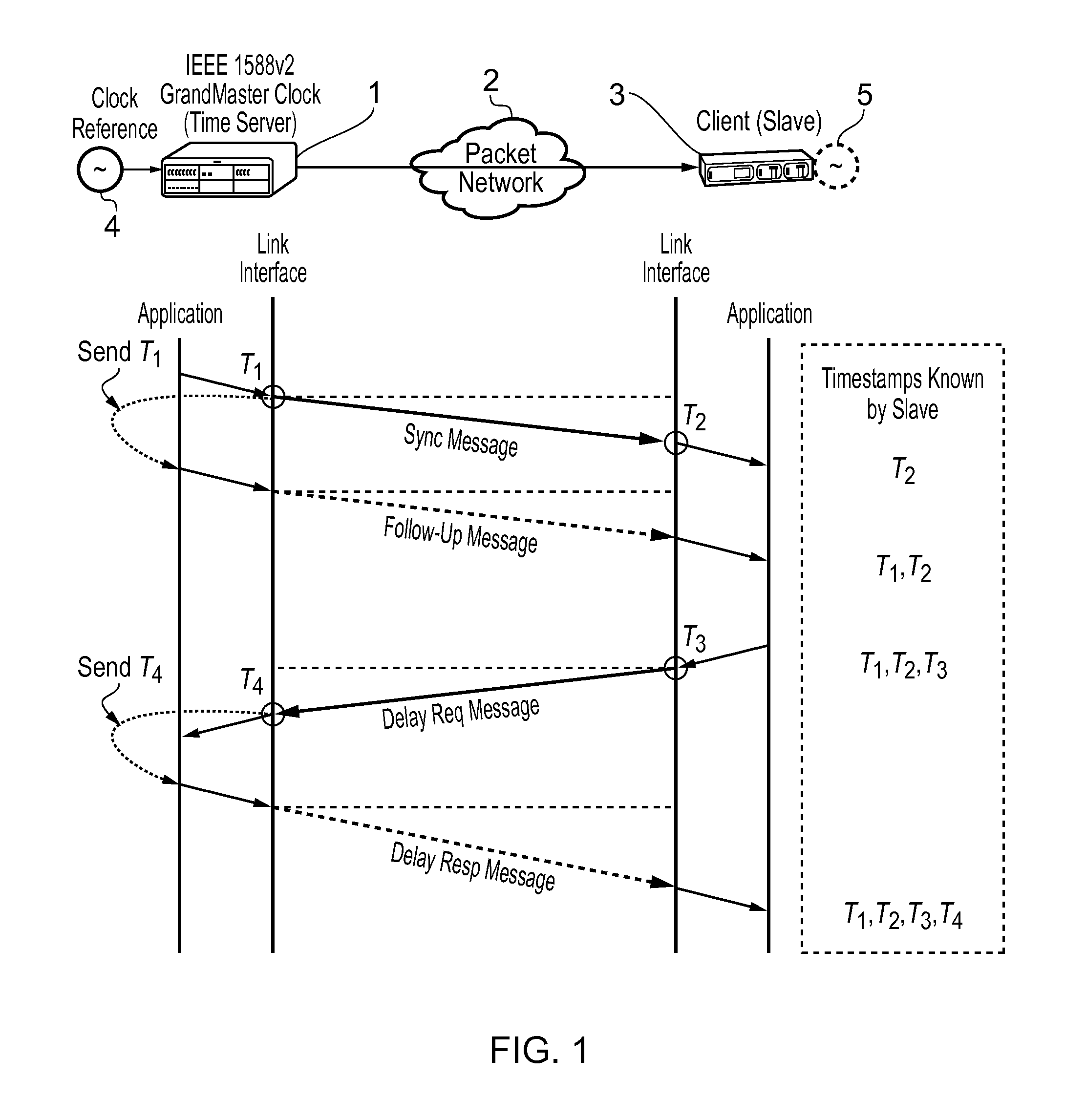Method and devices for synchronization using linear programming
a linear programming and synchronization technology, applied in the field of linear programming synchronization methods and devices, can solve the problems of dropping calls, degrading the overall user experience, and affecting the overall user experience, and affecting the synchronization effect of the mobile client, so as to achieve the effect of reducing the number of calls, and reducing the overall user experien
- Summary
- Abstract
- Description
- Claims
- Application Information
AI Technical Summary
Benefits of technology
Problems solved by technology
Method used
Image
Examples
Embodiment Construction
[0036]At their broadest, slave devices of the present invention are arranged to synchronize a slave clock in the slave device to a master clock by solving a linear programming problem to derive an estimate of the skew and offset of the slave clock relative to the master clock.
[0037]A first aspect of the present invention provides a slave device connected to a master device having a master clock over a network, wherein the slave device includes a slave clock, and wherein: the slave device is arranged to: exchange with the master device, timing messages and record timestamps which are: the time of sending of said timing messages from the master device according to the master clock; the time of receipt of said timing messages according to the slave clock; the time of sending of said timing messages according to the slave clock; and the time of receipt of said timing messages according to the master clock; formulate a linear programming problem which seeks to minimize the expression θf−...
PUM
 Login to View More
Login to View More Abstract
Description
Claims
Application Information
 Login to View More
Login to View More - R&D
- Intellectual Property
- Life Sciences
- Materials
- Tech Scout
- Unparalleled Data Quality
- Higher Quality Content
- 60% Fewer Hallucinations
Browse by: Latest US Patents, China's latest patents, Technical Efficacy Thesaurus, Application Domain, Technology Topic, Popular Technical Reports.
© 2025 PatSnap. All rights reserved.Legal|Privacy policy|Modern Slavery Act Transparency Statement|Sitemap|About US| Contact US: help@patsnap.com



